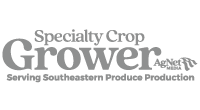

By Davie Kadyampakeni, Kondwani Kamsikiri and Alisheikh Atta
Water scarcity is one of the major constraints in Florida citrus production systems, primarily due to erratic rainfall patterns and the low water- and nutrient-holding capacity of the predominantly sandy soils. The state’s soils contain more than 95% sand and have low organic matter (<1%) and very low water-holding capacity.
These challenges are further exacerbated by the endemic citrus greening disease (huanglongbing or HLB) which alters tree physiology and reduces root functionality. HLB-affected citrus trees are sensitive to both water stress and excessive moisture due to compromised root systems and impaired water and nutrient uptake. Thus, precision irrigation practices such as drip irrigation and microsprinkler irrigation that enhance water- and nutrient-use efficiency while minimizing nutrient leaching are vital for sustainable citrus production and improved environmental quality.

A field study was conducted at the University of Florida Institute of Food and Agricultural Sciences (UF/IFAS) Citrus Research and Education Center in Lake Alfred to compare the effectiveness of conventional and deficit irrigation practices in improving water-and nutrient-use efficiency and performance of young HLB-affected citrus trees. The study evaluated four irrigation systems:
- Conventional drip irrigation
- Alternate wetting and drying irrigation with reflective mulch and drip irrigation
- Conventional drip irrigation with reflective mulch (CDM)
- Microsprinkler irrigation (MS)
Research results showed significant differences among the irrigation systems, with CDM exhibiting the highest sap flow or water use (up to 41.82 g/h/cm²) in summer and spring months. In addition, canopy growth and size also varied significantly, with MS showing the lowest trunk cross-sectional area and canopy volume. In contrast, fruit yield per tree and NO₃-N concentration did not differ significantly between treatments, possibly since these are still young, bearing trees.
These findings suggest that drip irrigation with reflective mulch provided physiological benefits to HLB-affected trees by enhancing canopy development and water/nutrient-use efficiency. Fruit yield was affected by environmental variables, particularly hurricanes and freezes, in addition to diseases.
Leaf nutrient concentrations remained in the optimum range, suggesting that all systems met tree water and nutrient requirements. This study is still continuing to validate fruit yield and quality data assuming production years free of hurricane and freeze damage to provide the appropriate guidelines for large-scale citrus growers on the water conservation benefits and environmental sustainability associated with microirrigation. Commercial growers should consider using frequent irrigation and fertigation practices for young trees to save water and fertilizer and promote vigorous tree growth and development.
Acknowledgment: The authors are grateful to the UF/IFAS Citrus Initiative for funding this research.
Davie Kadyampakeni is an associate professor, Kondwani Kamsikiri is a graduate student, and Alisheikh Atta is a postdoctoral research associate at UF/IFAS Citrus Research and Education Center in Lake Alfred.
Share this Post
Sponsored Content










